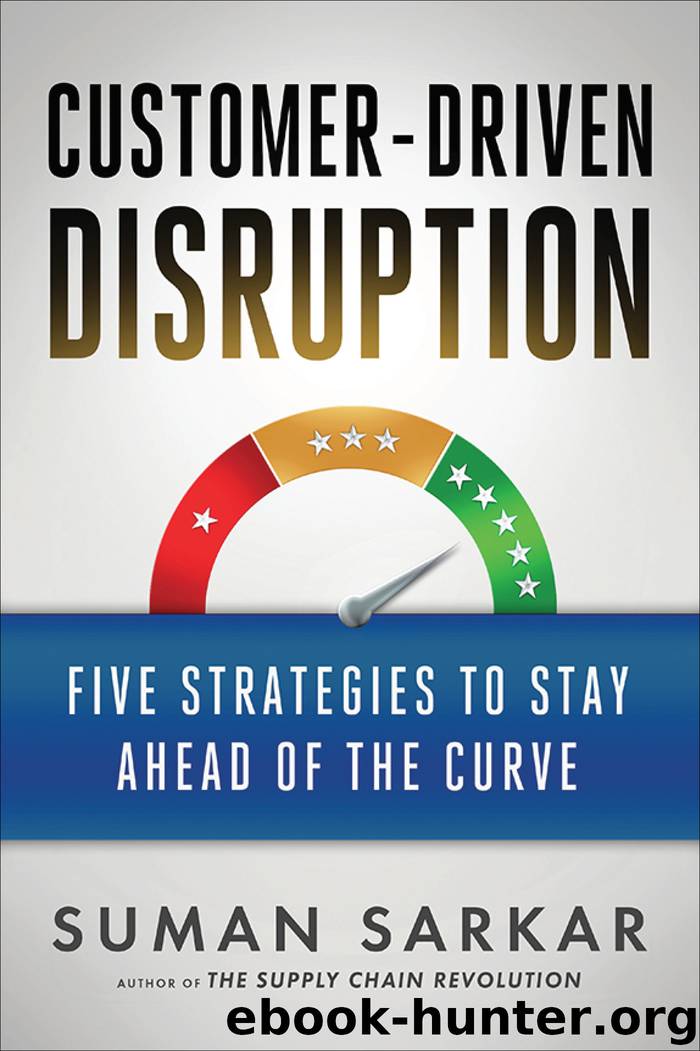Customer-Driven Disruption by Suman Sarkar

Author:Suman Sarkar
Language: eng
Format: epub
Publisher: Berrett-Koehler Publishers
Published: 2019-03-17T16:00:00+00:00
Step 4: Produce Only What Your Customers Are Buying
Producing only what and as much as your customers are buying is always prudent. It keeps capacity available and prevents production and supply chain bottlenecks caused by overproduction. That’s what Zara and other fast fashion companies do. They idle their plants when they don’t have demand and refuse to produce products that are not selling. This gives them the capacity to make new products quickly.
Most companies don’t do that. They mass produce in large quantities to keep costs down, believing that making more costs less. So operations teams are incentivized to keep the plants running even when the products aren’t selling—and eventually get scrapped or deeply discounted.
These things happen because companies don’t plan properly for production. They base their plan on forecasts created from history, not on present market trends. History can’t predict the future. Statistically, forecasts are wrong as often as they’re right. Too many things change—competitive action, customer taste or preference, disposable income—to predict customer demands based on past behavior.
Real-time demand information is a better guide. Shipping new products for the first time takes guesswork, but after that, you can base shipments on actual demand. That way, you use production capacities only for things that are actually selling. Even if demand data is not readily available, you can ask customers about future demand or orders. If that is not possible, then firms can estimate demand based on a customer’s production plans and inventory levels. When selling to customers, then, companies can use actual order information instead of forecasts as a trigger for shipment and production. As demand information becomes more reliable, inventory can be reduced and capacity can be freed up for new product launches. The motto should be “Don’t produce if the product is not selling.” Otherwise, the product will occupy warehouse space, be either written off or sold at a discount, and dilute brand value.
Download
This site does not store any files on its server. We only index and link to content provided by other sites. Please contact the content providers to delete copyright contents if any and email us, we'll remove relevant links or contents immediately.
Bad Blood by John Carreyrou(6558)
Rich Dad Poor Dad by Robert T. Kiyosaki(6414)
Principles: Life and Work by Ray Dalio(6226)
Playing to Win_ How Strategy Really Works by A.G. Lafley & Roger L. Martin(5937)
Management Strategies for the Cloud Revolution: How Cloud Computing Is Transforming Business and Why You Can't Afford to Be Left Behind by Charles Babcock(4528)
The Confidence Code by Katty Kay(4190)
Thinking in Bets by Annie Duke(4154)
American Kingpin by Nick Bilton(3760)
Delivering Happiness by Tony Hsieh(3369)
Project Animal Farm: An Accidental Journey into the Secret World of Farming and the Truth About Our Food by Sonia Faruqi(3178)
The Power of Habit by Charles Duhigg(3063)
The Tyranny of Metrics by Jerry Z. Muller(3005)
Brotopia by Emily Chang(3002)
Mastering Bitcoin: Programming the Open Blockchain by Andreas M. Antonopoulos(2983)
The Marketing Plan Handbook: Develop Big-Picture Marketing Plans for Pennies on the Dollar by Robert W. Bly(2978)
I Live in the Future & Here's How It Works by Nick Bilton(2938)
The Content Trap by Bharat Anand(2863)
Building a StoryBrand by Donald Miller(2843)
Applied Empathy by Michael Ventura(2839)
